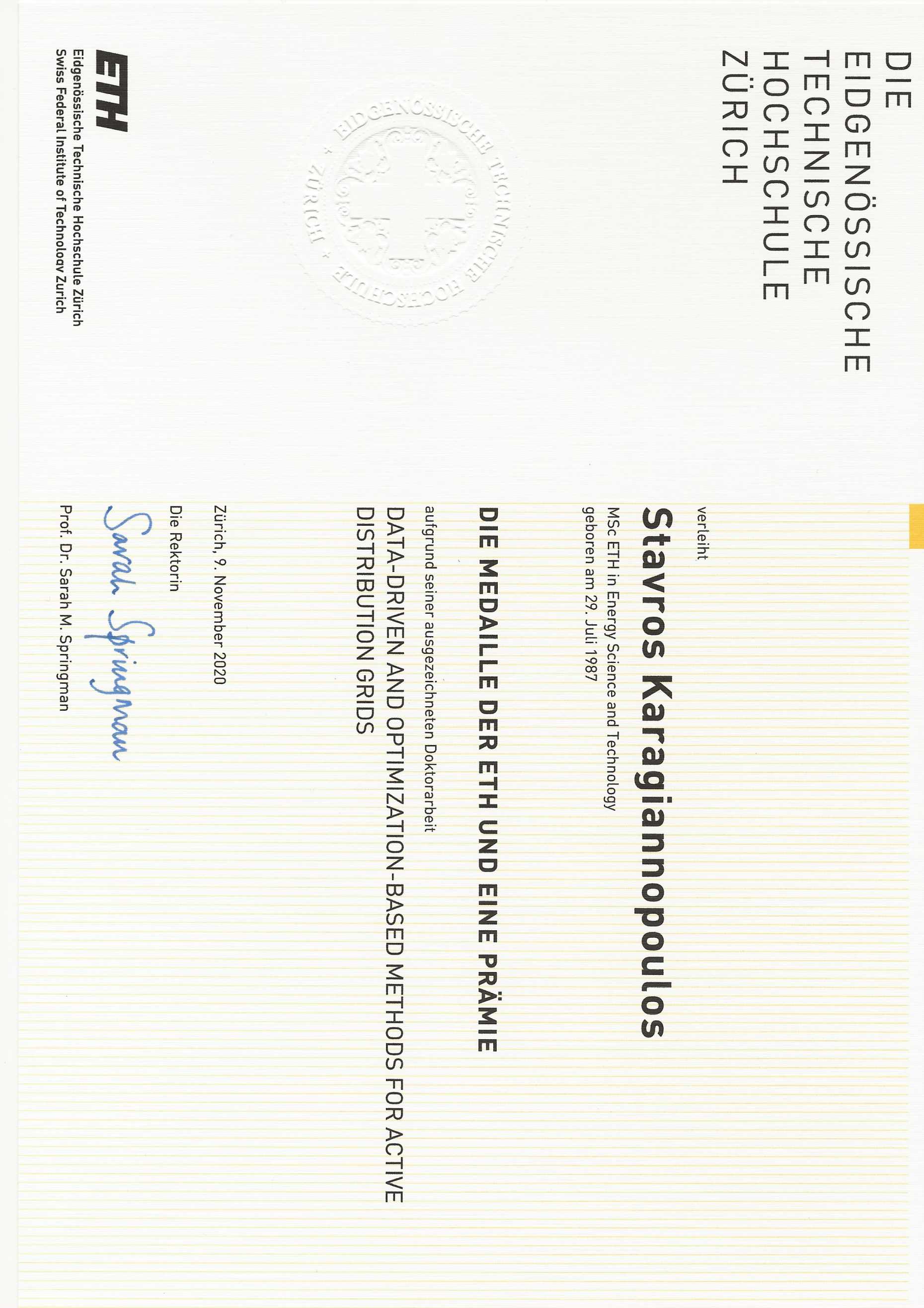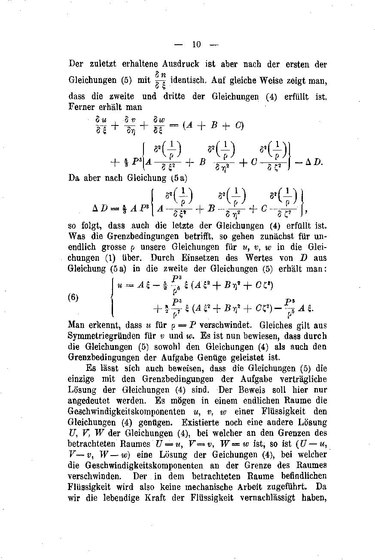
Zachary Hodge, Production, Characterization, and Monitoring of Surface Muon Beams for Charged Lepton Flavor Violation Experiments. Valeria Rizzoglio, Precise Beam Dynamics Models for Transport Lines in a Cyclotron-based Proton Therapy Facility. Gunther Wichman, Measurement of the Positronium 1S-2S Transition and Implications for that of Doctoral Thesis, Zurich, ETH Zurich, DOI: /ethz-b Research Collection Abstract The need to cope with the climate change challenge has given a strong impulse to promote energy produced by Renewable Energy Sources (RES), phasing out large plants based on fossil fuels in the transmission networks Taking a doctorate at ETH Zurich is an excellent investment for your future scientific career. With doctoral students out of a total of 21' students, ETH Zurich is one of the universities in Europe which focuses most intensively on research. Doctorates make a
PhD Theses – Precision Physics at Low Energy | ETH Zurich
In recent years, eth phd thesis, air pollution eth phd thesis has been recognized as a global, pressing issue. The resulting increase in environmental awareness leads to a tremendous rise in demand for low-cost CO2 sensors, which are key components of air quality monitoring and "smart home" applications, eth phd thesis. In order to access these high-volume, price-sensitive markets, technologies that offer low cost In this dissertation, new integrated plasmonic electro-optic devices on a silicon photonics platform were developed for optical interconnects, microwave photonics and terahertz applications.
Photodetectors compatible with the CMOS technology have shown great potential in implementing active silicon photonics circuits at infrared wavelengths. However, current technologies are facing fundamental bandwidth limitations. Here, eth phd thesis, we propose and experimentally demonstrate two plasmonic photodetectors operating at highest speed.
Such superior performance is attributed to the sub-wavelength confinement of the optical energy in a photoconductive based plasmonic-germanium waveguide detector enabling shortest drift paths for photo-generated carriers and a very small resistance-capacitance product. We show that combining plasmonic waveguides with an absorbing semiconductor enables efficient photodetection at highest operation speeds.
Along the same line, graphene holds great promises for high-speed photodetection. Yet, the responsivity of graphene-based photodetectors is commonly limited by the weak absorption of the atomically thin structure, eth phd thesis. In the following, eth phd thesis, we propose and experimentally demonstrate a plasmonically enhanced waveguide-integrated graphene photodetector. The device, which combines a 6 um long monolayer of graphene with field-enhancing plasmonic structures, features at the same time a high external responsivity of 0.
Furthermore, eth phd thesis, microwave photonics and terahertz technologies are attracting a great interest due to a high demand for increased wireless capacity. To cope with the high bandwidth requirements, wireless carrier frequencies are shifting towards the millimeter-wave and terahertz bands. Nevertheless, optical fibers are carrying the global eth phd thesis traffic around the world.
Ideally, future communication networks would offer full transparency and flexibility to switch between the optical and wireless domains. To this end, eth phd thesis, efficient, low-cost fiber-wireless transmitters and receivers are of crucial importance. In this work, we demonstrate for the first time a passive, all-optical, wireless-to-optical receiver in a transparent fiber-wireless-fiber link.
This breakthrough has become possible by directly mapping the wireless information onto plasmonic signals by means of an antenna-coupled plasmonic modulator.
By the direct wireless-to-optical mixing we can overcome any potential speed limitations associated with the electronics. Finally, in the last decades terahertz waves that typically extend from the GHz to the 10 THz frequency range enabled a large variety of new eth phd thesis from astronomy to biology and medical sciences as well as information and communications technologies, among others.
Still, most terahertz systems rely on bulky free-space optics. Their limited capabilities, high complexity and high cost strongly hinder the development of practical systems for a broader range of applications. Most prominently, chip-size high-performance terahertz sources and detectors would offer significant advantages in a multitude of areas.
Here, we demonstrate a fiber-coupled, integrated plasmonic terahertz field detector on a silicon-photonics platform. The detector consists of two terahertz antenna-coupled plasmonic phase shifters integrated in a single on-chip Mach-Zehnder interferometer. The electro-optic phase shifters modulate the phase delay of a guided optical probe upon an incident oscillating terahertz field. The terahertz field amplitude is retrieved by a direct measurement of the probe power after the interferometer.
The strong confinement and resonant approach also result in an extremely short interaction length of only 5 um, which eliminates the need for phase matching. We demonstrate an electro-optic bandwidth of 2, eth phd thesis. The frequency response of the detector can be custom tailored by the terahertz antenna design, showing the flexibility of this technology and its potential for future low-cost, scalable and hand-held terahertz systems.
Data-rich applications, such as cloud computing, video streaming and social media fuel a growing demand for high-performance data centers. Their performance is based on interconnected server nodes and thus a high-throughput and low-latency network is crucial for their operation. To support the network, cost-efficient optical transceivers have become the technology of choice, since they provide the required bandwidth density, eth phd thesis, distance and power efficiency.
However, eth phd thesis, optical transceivers require many components such as lasers, eth phd thesis, photodetectors, optical modulators and electrical circuits to be assembled. This assembly represents a substantial fraction of the total transceiver cost. Hence, a monolithic integration of these components is a well-known way to reduce this cost.
Today, all building blocks of an optical transceiver can be fabricated in the monolithic Silicon Photonics platform — except the laser. Integrating III-V materials, required for building on-chip lasers on silicon is therefore key for further cost reduction. In this thesis, an integration technology is developed to embed III-V based light sources in a CMOS Silicon Photonics platform. This technology allows lasers, photonic components and electronic circuits to be fabricated on the same chip.
With such tight integration, eth phd thesis, compact and cost-efficient optical transceivers can be realized, both key for future high-speed and high-volume optical interconnects. Semiconductor optical amplifiers SOAs have found widespread eth phd thesis in optical communications covering the important telecommunications window with optical carrier wavelengths from 1.
While amplifiers are usually operated in their linear region, the inherent nonlinearities of SOAs can be exploited for all-optical signal processing like signal regeneration, wavelength eth phd thesis, and modulation format conversion. For both, linear and nonlinear applications, the onset and the amount of the nonlinear response is important for choosing the proper operating point. In this eth phd thesis a nonlinear SOA model is developed.
Measuring the spectra resulting from a pump-probe experiment, the strength of the various nonlinear contributions can be assigned to inter- and intraband carrier dynamics in the semiconductor.
The experiments reveal for the first time the importance and the role of two-photon induced free carrier absorption FCATPA — an effect that so far was not properly taken care of. The resulting blue-shifted sideband makes it possible to design a patterning-free all-optical wavelength converter.
More generally, this model helps in finding optimal optical filter schemes for wavelength converters, resulting in patterning-free output signals at high bit rates. Nowadays, end users consume more data on mobile devices, such as smartphones, tablets or laptops, than on fixed-wired computers. Simultaneously, the quantity of data per session increases tremendously, primarily driven by video-on-demand and teleconferencing services. To cope with the increasing demand, new wireless communication schemes and technologies are needed.
To increase the capacity of mobile networks by the required order of magnitudes, two major technological changes can be implemented. First, the channel capacity can be increased by driving communication systems at millimeter waves. Second, the aggregated cell capacity can be increased by implementing space division multiplexing. In both cases, these new concepts require faster, more compact, and cheaper hardware solutions. In this work, the technical challenges resulting from the implementation of both aforementioned solutions are solved by using photonics in place of electronics.
In addition, the photonic-based implementation presented in this work empowers a novel multiplexing scheme, which leverages ultra-fast beam steering. This development, not available with electronic components, provides at the same time multi-beam capacity and reduces the hardware requirements. The ongoing technical revolution demands for a continuous growth of computational power.
This bottleneck is the major cause for slowing down the growth of computational power. Photonic communication is envisioned to overcome this limitation. Thus, integrating photonics within electronic circuits on a single platform is the scope of current research.
Such a platform uses photonics eth phd thesis communication and electronics for local computation. A fundamental component of this platform is the electro-optic EO modulator, which encodes the computed electrical signal onto an optical carrier. Ideally, eth phd thesis, EO-modulators should encode data at highest speed, with lowest energy consumption and on the most compact footprint. These characteristics are improved when photons and electronic signals are confined to smallest area.
Plasmonics achieve the tightest confinement among all photonic technologies and promises high-speed and energy efficient EO-modulators. The tight eth phd thesis is enabled by coupling photons to the electron gas of a metal to form surface-plasmon polartion SPP. This coupling forces electrons eth phd thesis oscillate with the frequency of light. However, moving electrons experience Ohmic losses due to scattering processes.
This attenuates the optical carrier and diminishes the performance of the optical link, eth phd thesis. For instance, current state-of-the-art high-speed plasmonic modulators feature insertion loss IL in excess of 10 dB. This hampers practical implementation of plasmonics, despite the promises of high-speed and compactness.
In the course of this thesis low-loss plasmonic EO-modulators were developed. These devices feature low IL ~2. The following outstanding results have been achieved. First, the modulation efficiency scales more strongly with the confinement of SPP than the Ohmic losses increase. This allows one to reduce the device length, and thus, IL as they scale with length. This is contrary to eth phd thesis approaches which try eth phd thesis minimize device losses by reducing the confinement.
Based on this approach, the first plasmonic high-speed Mach-Zehnder modulator MZM was realized with a record voltage-length product modulation efficiency of 40 Vmicrons, as well as reduced IL of 8 dB, eth phd thesis.
These are harnessed by operating the modulator in close proximity eth phd thesis the absorption peak of the EO-material. Normally, this is avoided for photonic approaches as losses increase too fast when approaching the material resonances, however, these losses are negligible in comparison to Ohmic losses in plasmonic devices. Third, employing a hybrid resonant modulator schema comprising of a plasmonic cavity and a photonic bus waveguide. This allows one to bypass light with a photonic waveguide in the on-state max.
transmission desiredeth phd thesis, while in the off-state min. transmission desired light is converted to SPPs confined to a closed loop plasmonic ring. All the other demonstrated high-speed plasmonic EO-modulator utilize non-resonant schemes. While exploring this route, three first-of-their-kind high-speed modulator types have been realized, namely a plasmonic MZM, a plasmonic IQ-modulator and a plasmonic ring-modulator.
These realizations demonstrate the unique integration density enabled by plasmonics. For instance, the footprint of the MZM and IQ-modulator presented here is two and three orders of magnitude smaller, respectively, compared to their photonic counterparts. The experimental results prove that losses of high-speed devices can be reduced from 10 dB down to 2. Furthermore, the experiments show that material resonances can be harnessed to reduce device losses, and thus, ultimately achieving loss of approximately 1dB.
The results of this thesis provide an outlook on eth phd thesis potential of plasmonics to generate unique data-rates on smallest footprint. With global data traffic growing continuously, a communication infrastructure capable eth phd thesis dealing with the ever-increasing bandwidth demands of the global society is required. A large amount of traffic arises inside the datacenters that house thousands of servers eth phd thesis computing and storing information.
These servers are interconnected by communication links that more and more rely on optical rather than electrical technologies mainly due to the high bandwidth offered by optical interconnects.
Recently, the field of plasmonics has attracted attention by the scientific community for applications in optical communications.
Yavor Kamer - Phd Defense [Questions] ETH Zurich
, time: 1:00:36PhD Theses – Power Systems Laboratory | ETH Zurich

Eth Phd Thesis and more complicated tasks for advanced courses. You can always count on Do My Homework Online team of assignment experts to receive Eth Phd Thesis the best and correct solutions to improve your studying results with ease/10() Taking a doctorate at ETH Zurich is an excellent investment for your future scientific career. With doctoral students out of a total of 21' students, ETH Zurich is one of the universities in Europe which focuses most intensively on research. Doctorates make a Eth phd thesis (Rector’s Implementation Provisions, section 66). In the case of more than one author, all the co-authors must also agree to the further distribution. turning more often than humans would, and bottlenecks, i. Reducing complexity in this way is well understood

No comments:
Post a Comment